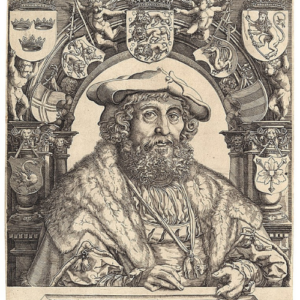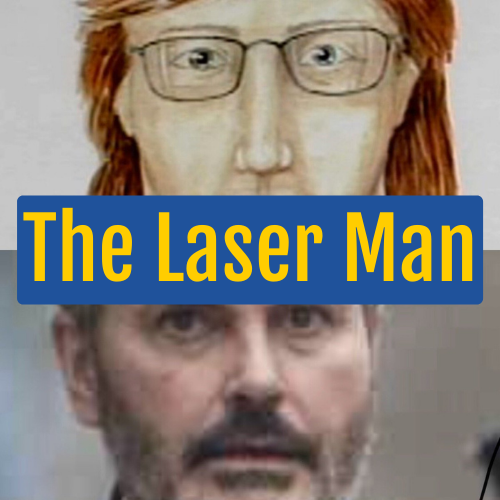Background
Today Sweden is looked upon as a peaceful neutral country, but it hasn’t always been that way. And today I want to talk about one of the historical events that I, as a kid was very fascinated about, and that is the Stockholm bloodbath, or as it’s also called the Stockholm massacre.
A couple of episodes ago, I talked about a king who became a pirate. He was one of the very early Kings in what was known as the Kalmar union where Denmark, Norway, and after some time, even Sweden were united.
It started with the Danish king Christian II who was to become the king of Sweden, but Sweden wasn’t that easy to convince that this was a good thing. We had supporters of Christian II as the king led by archbishop Gustavo Trolle, and we had people against Christian II becoming the Swedish king, and those were led by Sten Sture the younger.
King Christian tried to isolate Sweden and force them into a siege where he became the king with the support of archbishop Trolle, but he was defeated by Sten Sture and his followers and had to return to Denmark. He didn’t give up and did the second attempt to bring Sweden back under his control in 1518, once again, Sture and his followers fought back and he had to retreat, but at the third attempt, in 1520, when he got a large army of French, German and Scottish mercenaries, he was successful.

Christian II succeeds
Sten Sture was mortally wounded, which led to his followers, not feeling the strength to fight the Danish army. The Danish army approached Uppsala. This was where the Swedish Riksdag, the Swedish government of the time, had assembled and the senators agreed to render homage to Christian with one condition, he had to give a full amnesty for past actions and a guarantee that Sweden should be ruled according to Swedish laws and customs. Christian agreed to this and he was confirmed as the king of Sweden.
Sten Sture’s widow lady Kristin who was still living in Stockholm resisted the day. She even defeated the Danes during a battle but eventually, her forces were defeated at the battle of Uppsala on good Friday, April 6th, 1520.
When the pardon had been written down on paper, the mayor of Stockholm delivered the keys to the city to Christian, and he held a grand entry into the city. Shortly after that, he went back to Denmark and in October, he returned for his coronation.

The betrayal
His coronation took place on November 4th, 1520, and he was anointed by Archbishop Gustavo Trolle. After his coronation, a banquette was held for the next three days. But on the evening of November 7th, Christian summoned many of the Swedish leaders to a private conference at the palace, those were all people from the Trolle side and pro-union.
At dusk on November 8th, Danish soldiers entered the great hall of the palace, where the celebrations took place, and imprisoned several of the noble guests later that evening, even more of the King’s guests were imprisoned. All these people were people that had previously been marked by archbishop Trolle as people against him.
The following day, November 9th. a council headed by Archbishop Trolle sentenced the prisoners to death for being heretics. The main point of accusation was that they have United in a pact to depose Trolle a few years earlier, but in fact, many of them were leading men of the Sture party and therefore potential opponents of the Danish king.
At noon this day, November 9th, the anti-unionists, the bishop of Skara and the bishop of Strängnäs, were led out to the big square in the old town and beheaded. 14 noblemen, three burgomasters, 14 town councilors, and about 20 prominent citizens of Stockholm were also hanged or beheaded on the square, the executions continue throughout the following day and according to the chief executioner, Jörgen Homuth, 82 people were executed. It has been rumored but never proven that Cristian also took revenge on Sten Sture’s body by having it dug up and burned as well as the body of his child. His widow lady Kristina, and many other noblewomen were taken as prisoners to Denmark.
Christianne justifies the massacre in a proclamation to the Swedish people as a measure, necessary to avoid a papal interdict, but later on, while apologizing to the pope, for the decapitation of the bishops, he blamed his troops for performing an unauthorized act of vengeance.

The aftermath
Gustav Vasa was the son of Erik Johansson, one of the victims of the execution, and when he heard of the massacre he traveled north to the province of Dalarna to seek support for a new revolt. This revolt was ultimately able to defeat Christian and that would be the end of the Kalmar Union. Memories of the bloodbath would for a long time create hostility from the Swedes toward the Danes. And. Christiane II, got the nickname, Christian tyrann, Christian tyrant, in Sweden.
As I said, when I was a kid growing up in Stockholm, we did tours with our school into the old town where we had a walking tour and were told about this story. At the square, we got presented how heads were rolling down the streets, which probably wasn’t correct but made a great story for little kids as we could actually picture these almost a hundred people getting decapitated and their heads rolling down the street of the old town in Stockholm. I can till this day picture the image I had as a kid of the heads rolling down the narrow streets of old-town.
This is where I’m going to end the story for today. In my next episode, I will take you even further back to the history of Sweden. And I will talk about Norse mythology, about the Vikings and their gods and what they represented. So if that is something that interests you or maybe, you know, someone that would be interested in hearing about it, I would be very happy if you share this podcast with someone.
Until next time, as we say in Sweden
Hej Då




